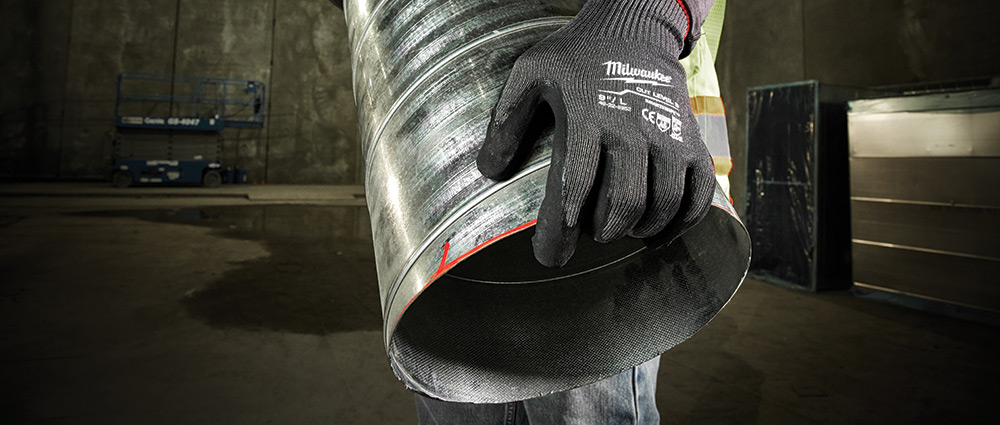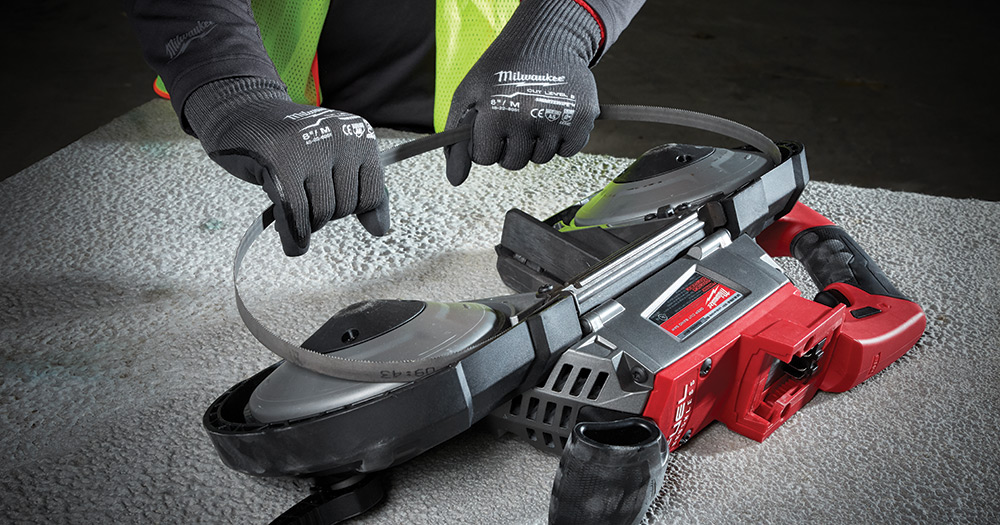April 2018 - At first glance, work gloves seem to be a straightforward piece of apparel. But, it’s crucial for users to ensure that their hand coverings meet specialized needs, such as increased dexterity, more protection, localized protection (e.g., reinforced knuckles), tacky grip or compatibility with touchscreen devices.
The American National Standards Institute has updated its ANSI/ISEA 105 standard to include new classification levels and a revised method for testing gloves, which will allow companies to better determine the precise level of protection they need to ensure workers are safe. The new cut resistance scale will expand from A1-A5 to A1-A9.

Ratings transparency
“The ANSI/ISEA 2016 standard improves the transparency of differences between higher-rated ANSI levels,” says Zachary Richman, associate product manager for Milwaukee Tool, Brookfield, Wisconsin, a manufacturer of heavy-duty power tools, accessories and hand tools for the professional trades. “The old rating for A4 gloves would equal A4, A5 and A6 gloves in the new rating. Additionally, the old rating for A5 gloves would equal A6, A7, A8 and A9 in the new rating scale.”
The broader scale provides a “greater differentiation between cut levels since the testing scale of higher cut-resistant gloves has been more clearly defined,” Richman says. The updated standard outlines a new test method for determining cut scores, using the Tomodynamometer machine (TDM-100). The goal of this test is to measure how much force is needed to cut through fabric.
The new testing protocol provides greater consistency between ANSI and EN standards, Richman notes. “Previously, EN388 utilized the Coup Test for cut resistance, which did not provide appropriate uniformity between the standards. EN388 now utilizes the TDM-100 test in addition to the Coup Test to provide a comparable cut score.”
The EN388-2016 TDM test is measured in Newtons and referenced based on an A-F scale, which can be easily converted from Newtons to grams, Richman says. “This will affect glove manufacturers because some will avoid the Coup Test since the blade reduces effectiveness after frequent cycles and reduces comparability.”

Selection criteria
When faced with an array of glove choices, users should select a model based on primary use. “For jobs requiring general material handling and remodeling applications, users will use lower ANSI level gloves to maintain comfort and dexterity,” Richman says. “When performing applications with increased exposure risks, such as sheet metal or glass handling and ducting, users can choose gloves with a higher ANSI rating to appropriately protect them from cuts and abrasions.”
Milwaukee Tool has already designed and developed dipped and cut-resistant gloves that conform to the new scale and testing method, as well as meet EN ratings for abrasion, cut, tear and puncture.
“All of these new gloves have been thoughtfully developed with a proprietary knitting process and nitrile dip and perform well in a wide range of temperatures,” Richman says. The gloves also are resistant to most common chemicals and solvents found on typical job sites and feature SmartSwipe technology so users can access phones or tablets without removing the gloves.
The company’s Job Site Solutions (JSS) team and sales force are available to answer questions and educate customers about new standards.
“Our sales force hosts lunch and learns as well as safety seminars for our distributors in order to build an educational awareness of Milwaukee as a total solution provider,” Richman says. The JSS team “specifically calls on the core trades by helping instruct at training centers for apprentices. Furthermore, JSS supports user job sites by educating key decision-makers and workers to understand which gloves are most appropriate for the applications at hand.”
As the standards are implemented, customers should expect a growing emphasis on products from glove manufacturers being retested and updated to meet both ANSI/ISEA 2016 and EN388. “This will result in better transparency for customers and safety on jobsites that need higher levels of cut resistant gloves,” Richman says.
Milwaukee Tool
Brookfield, Wisconsin
1-800/SAWDUST

